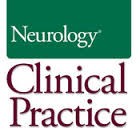We examined the King-Devick (K-D) test, a vision-based test of rapid number naming, as a complement to components of the Sport Concussion Assessment Tool, 3rd edition (SCAT3) for diagnosis of concussion. Baseline and post-concussion data for the University of Florida men’s football, women’s soccer and women’s lacrosse teams were collected, including K-D test, Standardized Assessment of Concussion (SAC) and Balance Error Scoring System (BESS). Among 30 athletes with first concussion during their athletic season (n=217 total), differences from baseline to post-injury showed worsening of K-D time scores in 79%, while SAC showed a ³ 2-point worsening in 52%. Combining K-D and SAC captured abnormalities in 89%; adding the BESS identified 100% of concussions. Adding a vision-based test may enhance the detection of athletes with concussion.
Summary Points:
- In this retrospective analysis of collegiate athletes at the University of Florida, 79% of concussed athletes showed worsening of K-D test scores from baseline while SAC worsening was seen in 52%.
- Combining K-D Test with SAC and BESS identified 100% of concussions.
- The K-D test, a visual test that measures neurological dysfunction not captured by cognitive or balance tests, is additive to the sideline concussion evaluation.
- Worse K-D scores were associated with reduced ImPACT visual motor speed and visual memory and worse SAC scores.
- The brain pathways for eye movements are widely distributed and involved the frontal eye fields, supplementary eye field, dorsolateral prefrontal cortex, parietal lobes, and deeper structures including the brainstem – all areas that are susceptible to injury in concussion.
- Data from the study demonstrate the additive effect of using multiple sideline tools that examine a wide range of neurologic dysfunction; while cognitive and balance tests were normal in certain subjects, a visual test, the K-D test, showed abnormalities.
- Adding a test that captures saccadic eye movements as well as other aspects of visual function adds a critical dimension to post-injury assessment in concussion.

